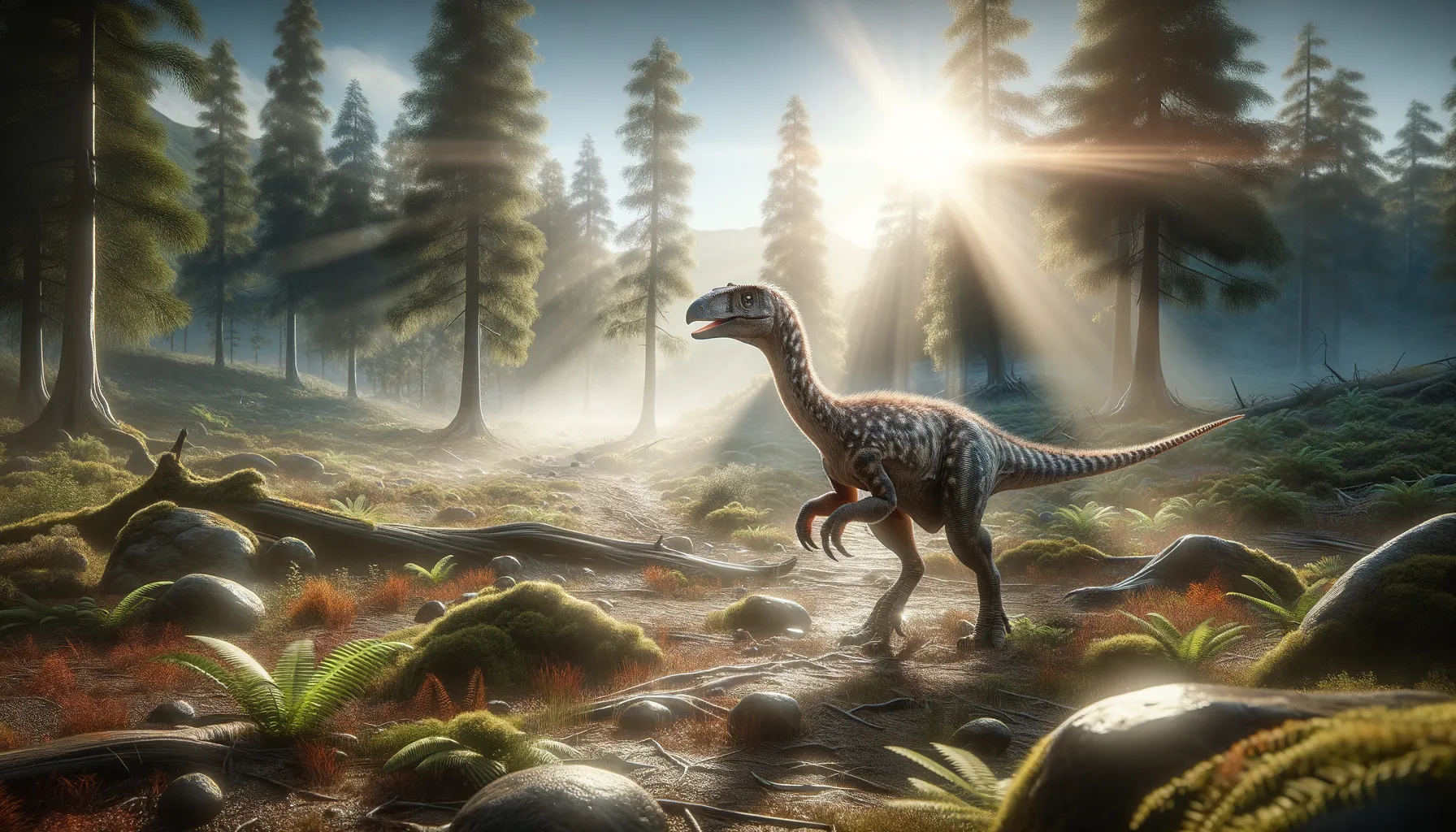
Jiangxisaurus
A small creature from ancient times.
Period
Cretaceous
Length
About 2 meters long.
Height
Around 1 meter tall.
Weight
Approximately 40 kilograms.
Jiangxisaurus was a small, bipedal dinosaur that lived during the Late Cretaceous period. Discovered in China, it is known for its bird-like features and is considered a part of the oviraptorosaur group. With a lightweight body and a beak-like mouth, this dinosaur is believed to have had omnivorous feeding habits. Its fossil discoveries have provided valuable insights into the diversity and evolution of small theropods in the region.
Diet
Jiangxisaurus was likely omnivorous, feeding on a diet that included plants and small animals. Its beak-like mouth suggests it could have been adept at pecking at and consuming a variety of food sources.
Hunting
Given its small size and likely omnivorous diet, Jiangxisaurus might not have been a traditional hunter. It possibly foraged for food rather than pursuing prey aggressively, using its beak to gather sustenance from the ground.
Environmental challenges
Jiangxisaurus lived in a diverse environment with various predators, which posed a significant challenge to its survival. The competition for food with both smaller and larger dinosaurs would have been intense. Seasonal changes and the potential scarcity of resources during dry periods likely required it to adapt in terms of diet and habitat choice. Additionally, coexistence with other oviraptorosaurs may have influenced its behavioral adaptations.
Speed
Likely slow-moving due to its small size.
Lifespan
Estimated lifespan similar to modern birds.
First discovery
Discovered in Ganzhou, Jiangxi Province in 2013.
Fun Facts
- Jiangxisaurus lived during the Late Cretaceous period, which was around 70 million years ago.
- This dinosaur was discovered in the Jiangxi Province of China, which is how it got its name.
- Jiangxisaurus was a theropod, meaning it was a type of bipedal dinosaur, walking on two legs.
- Unlike some theropods, Jiangxisaurus was likely herbivorous, feeding on plants.
- It was relatively small compared to other dinosaurs, estimated to be about 1.5 meters long.
- Jiangxisaurus had a beak-like mouth, which suggests it could have been adept at picking vegetation.
- Fossil evidence indicates it had features that are similar to modern birds, offering insights into the evolution of birds from dinosaurs.
Growth and Development
Like its bird-like relatives, Jiangxisaurus probably experienced rapid growth rates during its juvenile stages. This quick development would have been essential for reaching maturity and gaining survival advantages in a predator-laden ecosystem. Its adult features, such as a robust beak and lightweight skeleton, would have developed early to enable diverse feeding strategies.
Habitat
Jiangxisaurus inhabited forested regions abundant with plant life, providing ample cover and foraging opportunities. These areas likely offered various food sources, from foliage to small animals. Its environment also supported a wide array of other dinosaur species, indicative of a complex ecosystem.
Interaction with other species
Jiangxisaurus might have had both predator and prey interactions with other species. While small carnivorous dinosaurs posed a threat to it, it may have sought symbiotic relationships with similarly sized herbivores for mutual protection. Its role in the ecosystem was likely that of a secondary consumer, feeding on both plants and small creatures.
Natural lifespan
Jiangxisaurus likely had a lifespan comparable to medium-sized birds.
Reproduction
Jiangxisaurus likely reproduced through egg-laying, similar to other oviraptorosaurs. Nesting behaviors may have included communal nesting grounds to increase the survival rate of offspring. Parental care might have been present to some extent, providing protection and basic care for the young during their most vulnerable stage.
Social behaviour
While definitive evidence is scarce, Jiangxisaurus may have exhibited some degree of social behavior, possibly forming small groups or family units. This could have provided advantages, such as cooperative foraging and increased protection from predators. Its behavior might have mirrored that of certain modern bird species.
Fossil locations
Fossils of Jiangxisaurus have been primarily found in Ganzhou, Jiangxi Province, China. This area has yielded numerous dinosaur fossils, reflecting a once thriving Late Cretaceous ecosystem. The discoveries contribute to understanding the diversity of oviraptorosaurs in this region.
